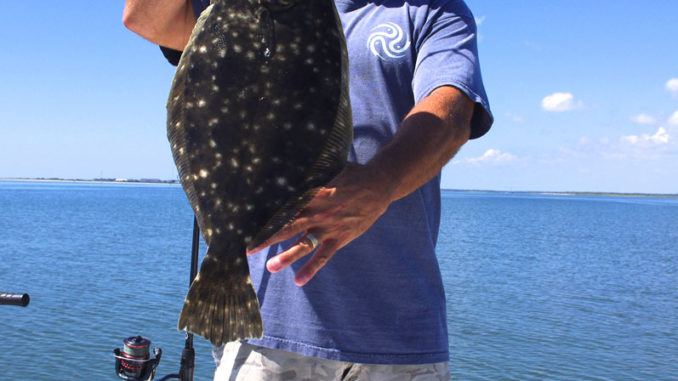
Big push of bait as water warms makes flatfish a winning proposition in ICW, Snow’s Cut.
June brings real change to inshore waters with spring coming to a close. The perfect storm brews in the creeks and sounds along southeastern North Carolina’s coast; local estuaries boom with life: floods of crabs, slurries of small fishes and shrimp and boatloads of jazzed-up gamefish, including America’s favorite fluke. It’s time for doormat seekers to connect with trophy flatfish in the lower Cape Fear River and the neighboring Intracoastal Waterway between Snow’s Cut and Wrightsville Beach.
North Carolina’s southeastern coast is chocked full of prime flounder habitat. Combining the massive Cape Fear, ICW, and all of the salty waters between Wrightsville Beach and Snow’s Cut; diehard anglers have endless places to find flounder, and trophy-sized fish, too.
Capt. Jot Owens of Jot It Down Fishing Charters waits each year for the big boys to come out of hiding.
“We catch the biggest flounder of the year in June,” he said. “It is always a good month here, for the bait is plentiful and the fish are feeding heavily.”
Beginning in early April and into May, small baitfish begin to show up inshore, with a wave of shrimp, small croakers, pinfish and peanut menhaden arriving. By June, flounder are happy with the huge invasion of food choices in their favorite hiding places.
“The fish haven’t seen a lot of food all year, and with the bait showing up strong in June, they get fired off,” he said.
The region is full of submerged terrain that holds flounder, but the big boys and their smaller relatives congregate in unique locales where food is plentiful. Owens prefers drop-offs and places where he can see life along the bottom.
“The shallow-to-deep drop-offs between five and 15 feet are generally the best depths, and when I pull up to these places, I like to see shrimp and small fish scattering about,” he said, describing many of the best places as adjacent to grass edges and oyster beds near creek channels.
“I like places where the current pushes water and bait up on the edges. Flounder will lay and ambush bait coming by.”
Since flounder rely solely on their natural camouflage and flat chassis, a flowing current improves feeding opportunities. Owens prefers places with significant current flow.
“I don’t care what the tide is; I just need current, and the harder the flow, the better. Flounder seem to bite less when the current slacks,” he said.
Capt. Jeffery Wolfe of Seahawk Inshore Fishing Charters also finds his biggest fish near places with deep water, steep dropoffs and those unique spots where a combination of these features meet.
“Find places with creeks, docks, and points where it all comes together in or near deep water,” he said. “Find the combination of all of these in one place, and you will find flounder stacked in there, but if you find two of the three, you will still find fish.”
Even though flounder will be available all the way up the Cape Fear to Wilmington, he concentrates on the stretch from a few miles north of Snow’s Cut downstream to Bald Head Island. This segment of the river is loaded with docks, rock piles and spoil islands swarming with flounder.
The rock piles along drops are ideal places to find flounder; Wolfe prefers the areas where rocks are scattered somewhat.
“Fish will lie up against the rock piles and between the scattered rock sections,” he said.
Flounder are ambush feeders, and the numerous creeks scattered throughout this region – especially the ones with oyster rakes and deep water – are ideal places to find flounder in summer.
“I prefer places where small creeks join the main creek channels. Fish will push up, feeding on the rising tide, and they will stay around when the tide falls with baitfish and shrimp pouring out of the creeks,” he said.
Wolfe catches fish on different stages of the tide, but he prefers fishing the higher stages of the tide in the river when conditions are more preferable.
“When the tide gets low in the river, all the water east and west of the shipping channel gets real shallow. On low water, fish the deep drop-offs with structure near the shipping channel,” Wolfe said. “I stay away from places with water depths any less than three feet.”
While the river boasts some prime floundering grounds, Snow’s Cut and the ICW provide excellent habitat, current flow and the deep water flounder prefer. Owens, who is based out of Wrightsville Beach, will gladly stay close to home during the early summer to target big flounder.
“All of my big trophy fish have come from the ICW in June. The docks with deep water covered with shell and muddy bottoms are the best ones around,” he said.
The ICW between Carolina Beach and the US 76 drawbridge in Wrightsville Beach is loaded with docks and lots of ideal places to find flounder. Owens fishes around the pilings along the ICW with a variety of baits and scented soft plastics.
The effectiveness of these scented soft plastics to catch large flounder is hard to beat. Owens relies on 6-inch Gulp! Jerk Shad to entice large flounder to bite. Some days, he will use the 5- or 7-inch Jerk Shad or the 4-inch Gulp! shrimp to get his fish to bite on a consistent basis.
“Day-in and day-out, the 6-inch Jerk Shad is the winner for me,” he said. “It produces more doormats than any other bait.”
Owens pairs his Jerk Shad with traditional jigheads in sizes as light as 1/4- to ½-ounce in size, but he ends up with a 3/8-ounce head for most places when significant current exists.
“I basically use the least amount of weight I can get away with to keep the lure on the bottom,” he said.
Flounder rely mostly on sight and will react when a good-looking meal arrives in their strike zone. Owens chooses bright colors — pearl, chartreuse-pepper, neon, new penny and fire tiger — to ensure flounder have no troubles identifying the lure.
When using live bait, he prefers large baits in the 5-inch range for bigger flounder. Small croakers are his favorites, but pinfish, spots and menhaden are fine baits.
DESTINATION INFORMATION
HOW TO GET THERE: The Lower Cape Fear River and associated waters are accessible from numerous places between Snow’s Cut and Southport. On Paradise Island, two public boat ramps are available: one at the end of US 421 at the southern tip of Fort Fisher, and one at Snow’s Cut. On Oak Island, the Dutchman Creek Park landing is a mile east of NC 133. Southport Marina has boat-launching facilities for a fee. The ICW between Wrightsville Beach and Carolina Beach can be accessed from the ramp at Snow’s Cut and a public ramp at the junction of US 74 and US 76 just east of the ICW drawbridge in Wrightsville Beach.
WHEN TO GO: Flounder can be caught throughout the summer, with June being the best month, especially for the trophy-sized fish. The best action is on bright sunny days and when the water is clear. Avoid fishing slack tides.
BEST BAITS/TECHNIQUES: Use the least amount of weight as possible with scented, soft-plastic baits, such as Gulp! Jerk shad (5-, 6-, and 7-inch models) and 4-inch Gulp! shrimp. Jigheads from ¼- to ½-ounce work the best. Lures should be retrieved slowly, using a stop-and-go cadence along the bottom adjacent to structures, either working the lures across the current or up current. While normally used to target speckled trout, ½-ounce D.O.A. Shrimp are deadly for catching flounder. Choose bright colors under bright, sunny and clear-water conditions. Darker colors are preferred in stained water and periods of low light. For live bait, large baits are ideal for larger flounder. Croakers, pinfish, spots and menhaden hooked on 3/0 to 4/0 circle hooks can be fished on Carolina rigs with small egg sinkers or just on a plain jighead.
TACKLE/GEAR: Bait casting and spinning gear perform well for catching flounder, but rods should be at least seven feet long with medium heavy actions. Braided line is preferred in the 20-pound class. A fluorocarbon leader in 40-pound-test is preferred for its abrasion resistance around pilings, oyster shells, and other structure.
FISHING INFO/GUIDES: Capt. Jeffery Wolfe, Seahawk Inshore Charters, 910-619-99580 or http://www.seahawkinshorefishingcharters.com/; Capt. Jot Owens, Jot It Down Fishing Charters, 910-233-4139 or www.captainjot.com; Tex’s Tackle, Wilmington, 910-791-1763; Island Tackle and Hardware, Carolina Beach, 910-458-3049. See also Guides and Charters in Classifieds.
MAPS: Navionics, 800-848-5896 or www.navionics.com; The Good Spots, 800-411-0185 or www.thegoodspots.com Grease Charts, www.greasechart.com.
ACCOMMODATIONS: Microtel Inn & Suites by Wyndham, Carolina Beach, 866-539-0036; Brunswick County Vacation Guide, 910-755-5517 or www.ncbrunswick.com; The Official Travel & Tourism Website for North Carolina (www.visitnc.com).

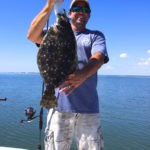
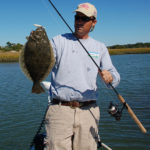
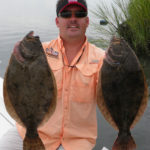
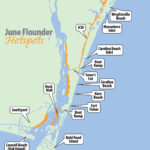




Be the first to comment